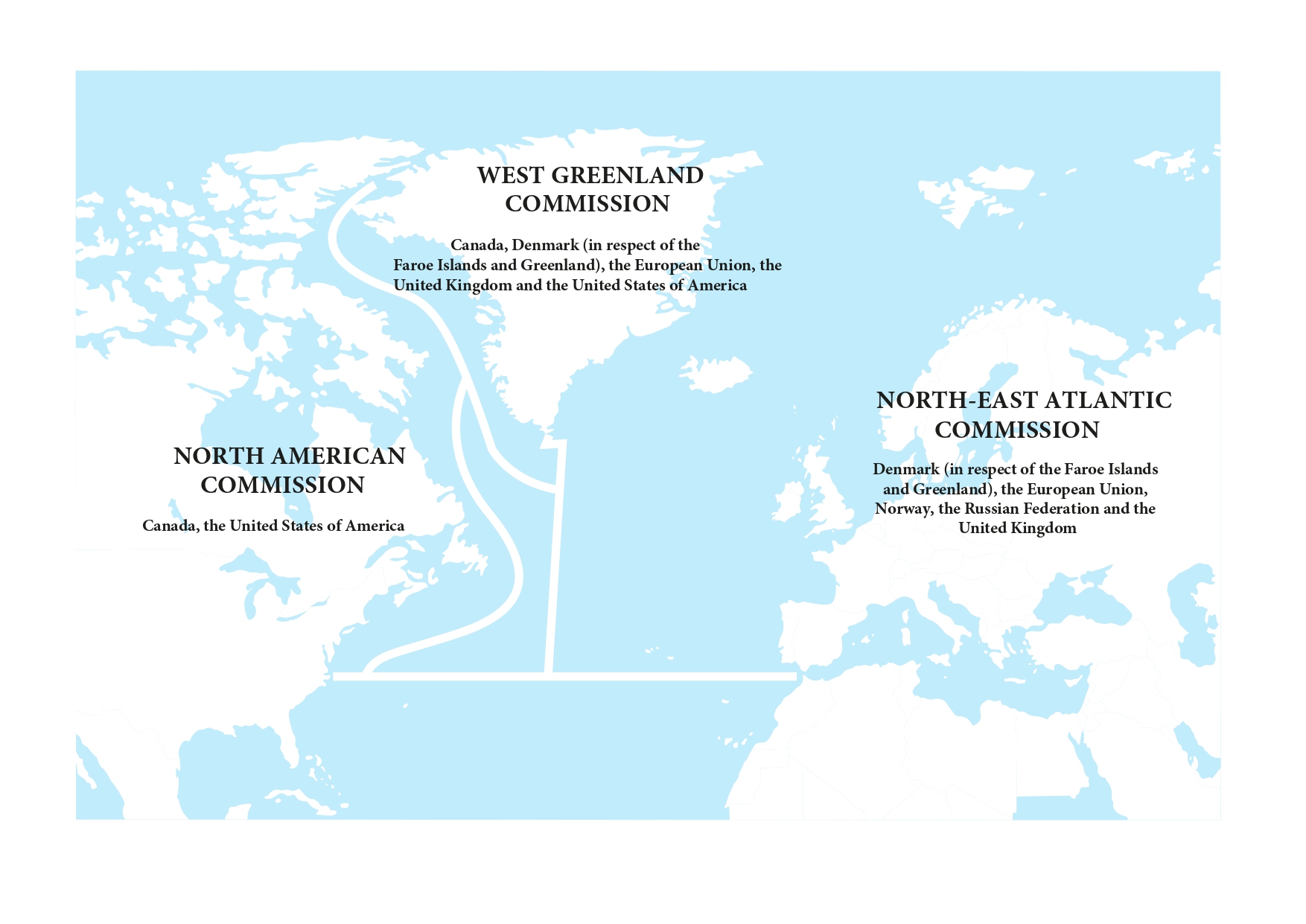
- In 1984, the Convention established an intergovernmental organization, the North Atlantic Salmon Conservation Organization (NASCO), with headquarters in Edinburgh, Scotland.
- The objective of the Organization is to conserve, restore, enhance and rationally manage Atlantic salmon through international co-operation taking account of the best available scientific information.
- The Parties to the Convention are currently Canada, Denmark (in respect of the Faroe Islands and Greenland), the European Union, Norway, the Russian Federation, the United Kingdom and the United States of America. France (in respect of St.Pierre and Miquelon) attends NASCO meetings as an observer. Iceland withdrew from NASCO with effect from 31 December 2009 because of financial considerations.
- NASCO consists of the Council and three regional Commissions - the North American Commission, the West Greenland Commission and the North-East Atlantic Commission.
- It also comprises the Finance and Administration Committee and the Secretariat. The International Atlantic Salmon Research Board (IASRB) established by NASCO works in close cooperation with it.
- Scientific advice for NASCO is provided by the International Council for the Exploration of the Sea (ICES).
The Polar Branch participates in the following meetings of NASCO:
- annual meetings of the NASCO Council to discuss conservation of salmon stocks, their restoring, sustainable management and conservation of their environment; develop relevant advice; address issues concerning implementation of NASCO agreements and resolutions, as well as relationships with other international organizations, non-governmental organizations and the aquaculture industry; estimate negative impact on wild salmon stocks etc.;
- annual meetings of the North-East Atlantic Commission, which adopts regulatory measures for Atlantic salmon in the Faroese Fishing Zone, negotiates joint actions of the Parties to conserve wild salmon stocks in the NASCO area and their protection from adverse effects, including diseases and parasites, etc. In the framework of the Commission the Russian Federation also conducts consultations with Norway concerning cooperation on issues relating to Norwegian coastal fisheries of wild Atlantic salmon originating from Russian rivers;
- meetings of the International Atlantic Salmon Research Board (IASRB);
- NASCO Working Groups.
The Polar Branch carries out state monitoring and assessment of wild Atlantic salmon stocks in the rivers of the North European part of Russia, comprehensive research of Atlantic salmon in the rivers of the Kola Peninsula, the Arkhangelsk Region, the Republic of Karelia, the Nenets Autonomous District and the Komi Republic. The main objective of these studies is to provide scientific basis for conservation and sustainable harvesting of salmon stocks originating from Russian rivers, which have a high level of genetic purity and rank second by abundance in the Northeast Atlantic area after Norway’s salmon stocks. The Polar Branch participates in the ICES Working Group on North Atlantic Salmon (WGNAS), which develops scientific advice for NASCO.
NASCO Guidelines and Resolutions:
- The Williamsburg Resolution
- NASCO Guidelines for the Management of Salmon Fisheries
- NASCO Guidelines for the Protection, Restoration and Enhancement of Atlantic Salmon Habitat
More information can be found at: www.nasco.int
